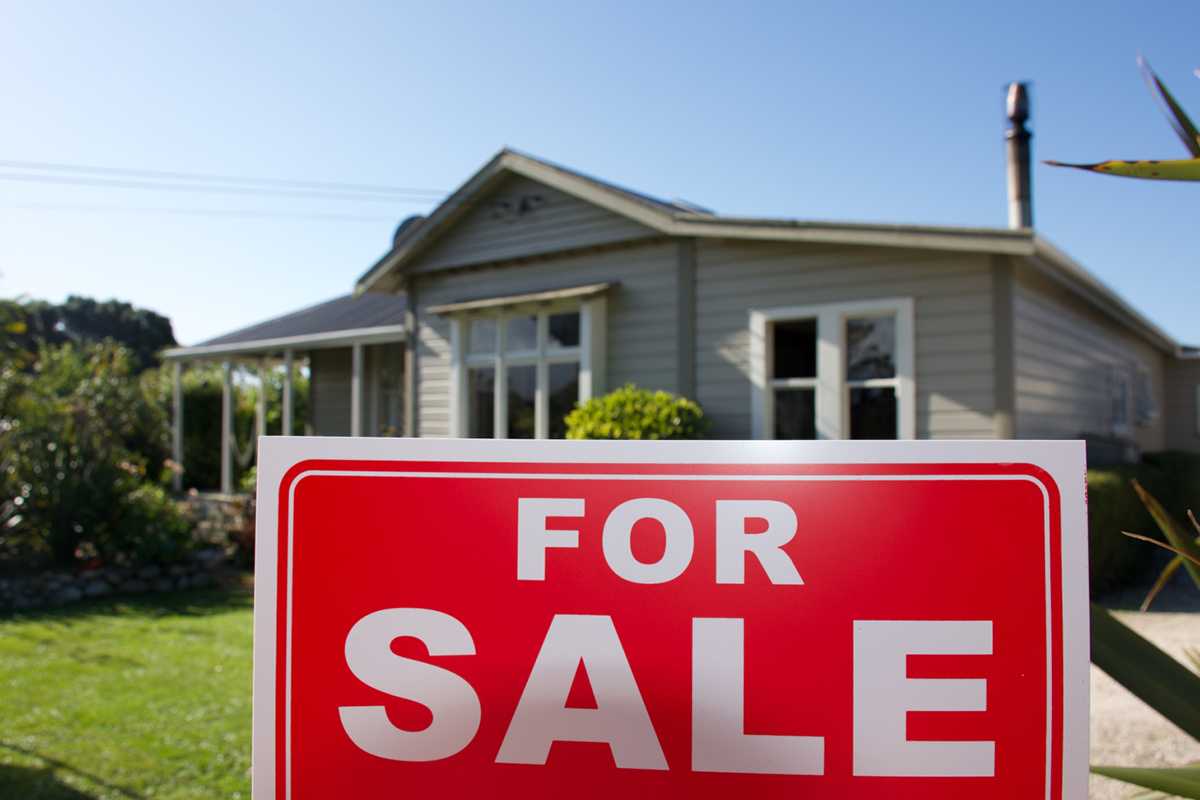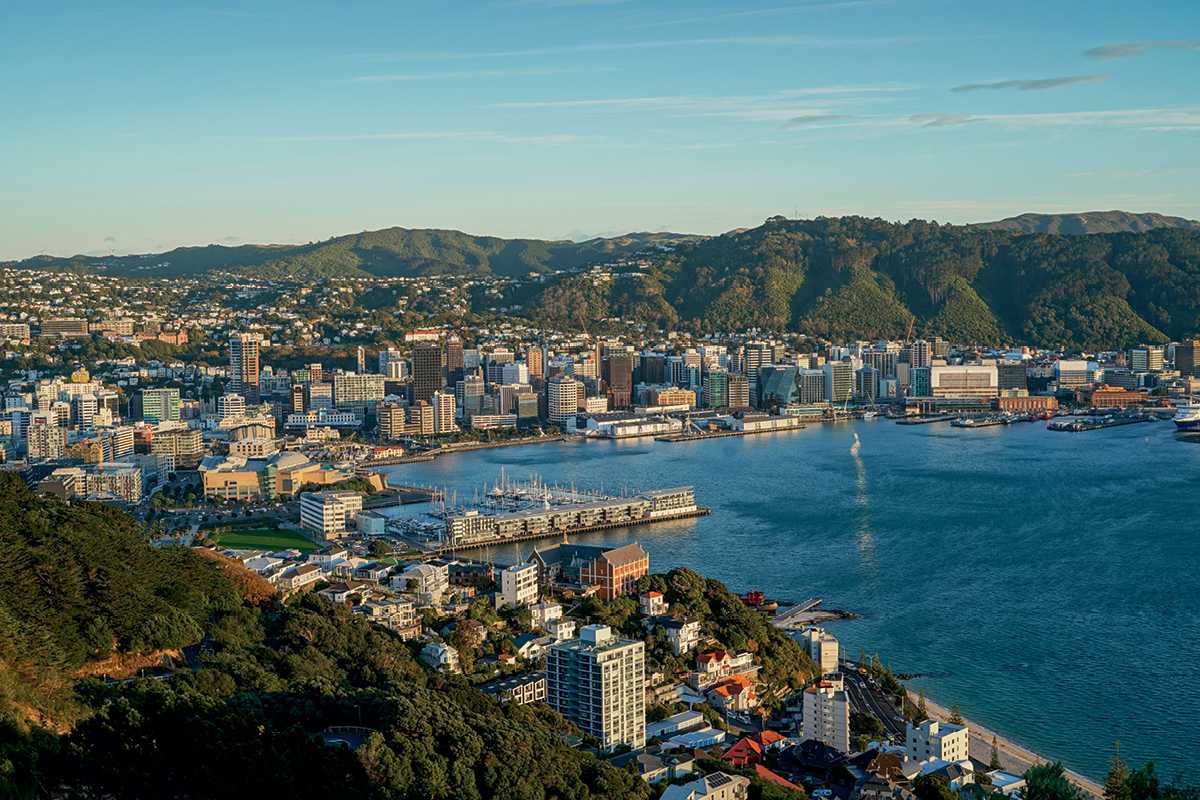
Flat trajectory forecast for house prices
The reintroduction of interest deductibility won’t bring a market surge, QV reveals in its latest report.
10 April 2024
Even though the government has started the reintroduction of mortgage interest as a tax-deductible expense, house prices are not going to roar into life or drop significantly.
QV says the market is flat and is likely to stay that way for some time.
Immigration is helping to fuel demand and QV operations manager James Wilson says it’s still unlikely there will be any strong value declines as the cooler months begin.
“Of course, it’s also equally unlikely that we’ll see any sudden strong home value growth. Flat is the best word to describe the market’s trajectory.”
Residential property values continued to gently rise and fall throughout the first quarter of this year amidst a glut of listings and an ongoing dearth of sales across much of the country.
The latest QV House Price Index for March shows the average home value increased nationally by 2.2 per cent to $924,734 over the first three months of 2024 – a small increase on the 1.3 per cent quarterly home value increase at the end of February.
The average home value is now 1.9 per cent higher than the same time last year and 13.1 per cent below the market’s peak in late 2021.
Of the main urban areas QV monitors, Queenstown experienced the most growth at 2.7 per cent, with Wellington and Christchurch not far behind on two per cent and 1.5 per cent respectively.
However, all three experienced less growth in the rolling three-month period than last, with Auckland (-0.2 per cent) even experiencing a modest average decline for the second straight month.
Wilson says the market is seeing only modest movement across the nation – mostly up, but some down – which is a fair reflection of a housing market that is continuing to find its footing again amidst some pretty strong economic headwinds.
“Although the pendulum has clearly swung in favour of prospective buyers, with a relatively large number of properties on the market giving them plenty of choice and helping to maintain downward pressure on prices overall, interest rates and credit constraints are continuing to make life difficult for everyone.”
Despite a modest increase in the average rate of home value growth nationally, just three main urban areas recorded more growth in this index than in the last one – New Plymouth (2.1 per cent), Palmerston North (0.6 per cent) and Invercargill (0.7 per cent).
“The recent influx of new listings on the market appears to have had more of a cooling effect within the main centres so far – most notably in Auckland, where home values have largely stalled in recent months. I expect to see this trend continue here and in some of our other larger cities over the next few months,” Wilson says.
Northland house prices
Home values are up across the wider Northland region by an average 1.4 per cent this quarter.
The average home value in Whangarei declined 0.2 per cent to $734,482 in the three months to the end of March but is still 26.5 per cent higher than it was four years ago at the outset of the pandemic.
Meanwhile, the average home value in Far North District increased 4.4 per cent this quarter to $726,943, and it increased by just 0.1 per cent to $861,912 in Kaipara.
Auckland house prices
Auckland has posted a small drop in average home values for the second month in a row.
The latest index shows the average home value declined across the wider Auckland region by 0.2 per cent to $1,283,155 in the March quarter, compared to a 0.1 per cent average reduction recorded in the February quarter.
Home values on the North Shore experienced the largest average drop at 1.6 per cent for the March quarter.
The average home value in Auckland is still 1.1 per cent higher than the same time last year, and 17.5 per cent higher than at the outset of the pandemic.
Tauranga house prices
The average rate of home value growth has slowed in Tauranga.
The city was one of the outliers in the previous index with average home value growth of 3.1 per cent in the February quarter. That average rate of growth slowed to just 0.5 per cent throughout the March quarter.
Tauranga’s average home value is now $1,041,157, which is 1.3 per cent higher than the same time last year and 31.2 per cent higher than at the outset of the pandemic.
Waikato house prices
Home value growth remains sluggish but largely positive across the broader Waikato region.
The latest index shows home values increased by an average of 0.7 per cent across the Waikato region in the March quarter, with only Otorohanga (-0.8 per cent) and Hamilton (-0.1 per cent) experiencing small declines on average.
The average value of a home in Hamilton is now 0.9 per cent higher than the same time last year, and 22.1 per cent higher than at the outset of the pandemic.
Taranaki house prices
The latest housing figures look far more robust in Taranaki this quarter than in many other regions of New Zealand.
The latest index shows the average home value increased in New Plymouth by 2.1 per cent to $721,558 this quarter. That figure is now 0.5 per cent higher than the same time last year, and 40.6 per cent higher than at the onset of the pandemic.
Meanwhile, the average home value has also increased 1.9 per cent to $452,980 in South Taranaki and climbed 3.9 per cent to $505,867 in Stratford.
Hawke’s Bay house prices
It was another mixed bag across the Hawke’s Bay region this quarter.
Residential property values dropped across the wider Hawke’s Bay region by an average of 0.3 per cent this quarter, with the average home in Napier increasing 0.6 per cent to $757,904, but falling 1.4 per cent in neighbouring Hastings to $781,697.
QV Hawke’s Bay manager Damian Hall says the market is flat with a significant increase in listings over the past couple of months. As a result, buyers are in no rush as there are plenty of homes to choose from. “Banks are still making it difficult to borrow, despite some of the major banks reducing their rates slightly. It looks like we might be in for a quiet winter.”
Palmerston North house prices
Property values continue to edge upward in Palmerston North.
The average home increased in value by 0.6 per cent to $646,150 this quarter – up slightly on the 0.5 per cent quarterly growth recorded in the previous index. That figure is now 2.4 per cent higher than at the end of March last year.
Local QV registered valuer Olivia Betts says home values had risen by an average of three per cent in the past six months. “We anticipate this trend will continue – though possibly at an even slower rate. We’re seeing a higher level of listings as agents aim to get their properties under contract before winter, which is historically a time where the market slows down.”
Wellington house prices
Wellington’s average rate of home value growth has slowed once more.
The latest index shows the region’s average home value increased two per cent to $875,392 throughout the March 2024 quarter – a slight drop on the 2.5 per cent average growth reported for the February quarter.
Once again, Kapiti (five per cent) has recorded the biggest average increase in home value, followed by Upper Hutt (3.8 per cent). Home values also increased on average in Wellington City (1.9 per cent), Porirua (0.7 per cent) and Hutt City (0.4 per cent) but at a slower rate than the national average (2.2 per cent).
QV senior consultant Blake Ngarimu says material value growth is being dampened by a healthy number of listings and high interest rates. “The market continues to be dominated by first-home buyers trying to get into the market while values across the Wellington region are more affordable.”
Nelson prices
The average home value in Nelson has done little better than break even throughout the first quarter.
The index for March shows the average home value has increased 0.2 per cent so far this year to $778,913 – down from the 1.2 per cent average rate of quarterly home value growth in the February index.
Although stock levels remain high, local QV registered valuer Jane Simpson says there is only a relatively modest amount of investor activity in Nelson and Tasman. “Owner-occupiers are still the most active group in Nelson and Tasman today, with first-home buyers still active as well.
“The market for residential properties priced between $800,000 and $950,000 remains steady. Properties in the higher price brackets are being negatively impacted by high interest rates, tight lending and the high cost of living.”
West Coast house prices
Property values continue to grow at a relatively rapid rate on the West Coast – with one exception this quarter.
Low sales volumes are still causing home value levels to fluctuate locally, with the average home value in Buller and Grey District surging ahead by 7.4 per cent and 7.8 per cent respectively this quarter. Westland, meanwhile, experienced a far more muted growth of 1.5 per cent.
But even on an annualised basis, with a larger sample of sales evidence, the average home value in Grey District is 19.3 per cent higher than the same time last year. In Buller, the average home value is nine per cent higher, and it’s 1.1 per cent higher in Westland.
The average home value is $371,150 in Buller, $419,044 in Grey, and $448,026 in Westland.
Canterbury house prices
The average rate of home value growth has slowed once more in Canterbury.
The latest index shows residential property values increased across the overall Canterbury region as a whole by 1.4 per cent this quarter, which is down on the two per cent growth on the quarter to the end of February, and 2.9 per cent for the quarter to end of January. Annually, the average home value is 3.1 per cent higher than at the same time last year.
In Christchurch, the average home value has increased 1.5 per cent to $763,993 this quarter, which is down on the 2.4 per cent growth recorded for the quarter to the end of February. The city’s annual growth is shown as three per cent.
In the wider Christchurch region, Selwyn District recorded an average quarterly increase of 0.6 per cent and an average value of $834,522, down slightly on the 0.8 per cent growth recorded in the February quarter. Growth in the Waimakariri District has also levelled out at 0.2 per cent for the quarter and an average value of $714,072, down on the 1.3 per cent quarterly growth recorded in the previous index.
Local QV registered valuer Rod Thornton says there is a drop in construction activity and higher listings, with the high cost of living now appearing to be hitting harder and interest rates still high on the previous low levels that many buyers initially purchased on. “While we cannot absolutely predict what the next few months will bring, signs are there may be some further slowing of the market and downward pressure on values.”
Otago house prices
Residential property values have increased by an average 2.3 per cent this quarter in Otago.
It is a slower rate of quarterly home value growth than the 3.4 per cent in the previous index, with every territorial authority recording less positive growth in this month’s index compared to last.
Waitaki (3.6 per cent) experienced the largest amount of home value growth in the region this quarter; Central Otago (one per cent) experienced the least.
The average home value in Dunedin increased 1.3 per cent to $635,474, which is 0.3 per cent higher than the same time last year. It’s the first time the city’s average home value has been up on an annualised basis since June 2022.
Local QV registered valuer Rebecca Johnston says Dunedin’s number of properties listed for sale continued to rise into March, with the days to sell also on the rise compared with late last year. “This highlights a loosening of supply versus demand, with it being firmly a buyers’ market.
“However, real estate agents are reporting open home attendance dropping away and a drop in multi-offer situations. This is to be expected due to tapering off of the selling season,” she says.
Queenstown house prices
Queenstown’s average rate of home value growth slowed this month.
The latest QV House Price Index shows the average home value increased 2.7 per cent this quarter to $1,826,238, down from a three-month rolling average of 4.2 per cent in the previous index.
The average Queenstown home is worth 9.9 per cent more than at the same time last year, and 46.3 per cent more than at the outset of the pandemic.
Invercargill house prices
Invercargill was one of the few main urban centres to record more home value growth in this index when compared to last.
The latest index shows the city’s average home value increased 0.7 per cent throughout the three months to the end of March – a reversal of the 0.5 per cent drop recorded throughout the three months to the end of February.
Invercargill’s average home value is $480,637, which is 6.3 per cent higher than the same time last year.
QV registered valuer Andrew Ronald says the latest figures indicate a continued strengthening in market conditions. “There is healthy demand from first-home buyers, and investors are beginning to return to the market with the restoration of interest tax deductibility rules over the next two years.”


